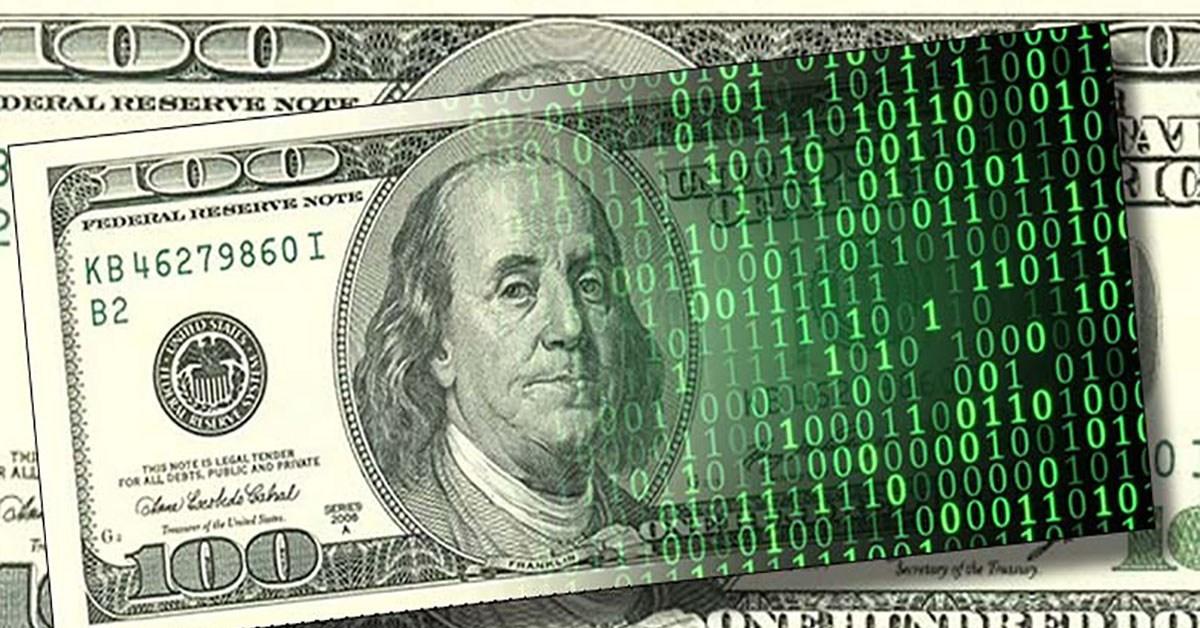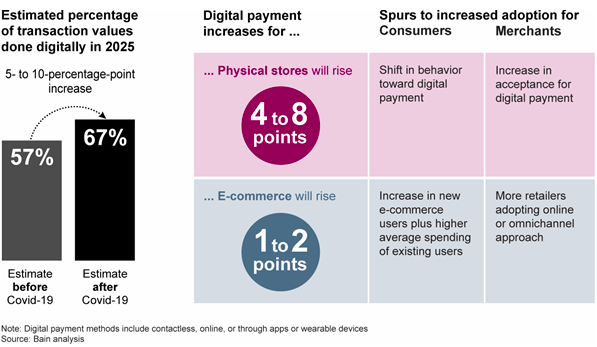By Tyler Durden
The COVID Crisis Supercharged The War On Cash, Part 1 Tyler Durden Tue, 06/30/2020 - 20:45
The corona crisis has already taken a very high toll and caused deep damage in our societies and our economies, the extent of which is yet to become apparent. We have seen its impact on productivity, on unemployment, on social cohesion and on political division. However, there is another very worrying trend that has been accelerated under the veil of fear and confusion that the pandemic has spread. The war on cash, that was already underway for almost a decade, has been drastically intensified over the last few months.
The “problem”
Over the last years, and as the war on cash escalated, we’ve gotten used to hear certain arguments or “reasons” on why we should all abandon paper money and move en masse to an exclusively digital economy. These talking points have been repeated over and over, in most western economies and by countless institutional figures. “Cash is used by terrorists, money launderers and criminals” is arguably the most oft-repeated one, as it’s been widely employed in most debates about the digital transition. Just a couple of years ago, it was also used by Mario Draghi, to support the decision to scrap the 500 euro note. We didn’t get any specific information or data about how many terrorists were actually using this high-denomination note, but we do know a lot of law-abiding citizens were using it to save, as did small business owners for their operational liquidity needs.
Now, however, the corona crisis has introduced a whole new direction of anti-cash rhetoric and fresh arguments in favor of a digital economy. Even in the early stages of the pandemic, when essentially nothing was concretely known about the virus itself or its transmission, the seeds of new fears were already planted by sensational media reports and fear-mongering political and institutional figures. The insidious idea that “you can catch Covid through cash” might have been prematurely spread, but it did stick in most people’s minds. This is, of course, understandable, given the extremely high levels of uncertainty and anxiety in the general public. Wanting to eliminate potential threats was a natural instinct and so was the urge to take back at least some control over our lives, after they’d been suddenly thrown into utter chaos in the wake of the global economic freeze.
Another factor that concretely helped the shift away from physical cash was an entirely practical one. Given the lockdown measures and the new “social distancing” directives that were enforced all over the world, it became difficult to use cash, even if you really wanted to, or had no other means of transaction, as is the case for billions of people. With physical stores being forced to shut down and with more and more online shops offering contactless delivery (either as a choice or as a service requirement), the need for cash very quickly gave way to digital payments.
For most of us, who have access to online banking, cards or other digital payment services, this introduced no real inconvenience and we probably didn’t even give it a second thought. However, for many of our fellow citizens it was a serious impediment, which in some cases blocked their access to basic goods and essential supplies. Contrary to the glowing promises of the digital economy, of financial inclusion and convenience, the fact remains that there are still millions of people who simply do not have access to this brave new world. According to figures by the World Bank, globally there are 2.5 billion people with no bank account, with a high concentration in the developing world. In the West too, however, there is a very large part of the population that is unbanked and/or has no access to digital solutions, while the elderly are also to a very large extent “locked out” of the digital economy. For all these millions of people, cash is the only way to save, to transact and to cover their basic needs.
The “solution”
With cash being presented not just as a danger to society and to national security, but also as a direct health hazard due to the coronavirus, the push towards digital alternatives has been massively reinforced over the last few months. Both international organizations and individual governments have actively participated and encouraged this push, some through public guidance statements and others through the blunt enforcement of direct rules and measures that leave no real room for their citizens to make their own choices.
The CDC in its official guidance to retail workers recommenced that they “encourage customers to use touchless payment options”, while a report by the Word Bank highlighted the need to adopt cashless payments for the sake of “social protection”. The UAE Central Bank encouraged the use of online banking and digital payments “as a measure to protect the health and safety of UAE residents”, and the Bank of England has acknowledged that banknotes can hold “bacteria and viruses” and recommended that people wash their hands after handling money. In March, a report from Reuters revealed that the U.S. Federal Reserve was quarantining dollars that it repatriated from Asia and so did South Korea’s central bank, while banks in China were forced by the government to disinfect bills and keep them in a safe for up to 14 days, before putting them in circulation.
A highlight, however, came in May, when the World Economic Forum published an article in its “Global Agenda” strongly supporting the mass adoption of digital payments, for the sake of public health. In it, the authors argue that “contactless digital payments at the point of sale, such as facial recognition, Quick Response (QR) codes or near-field communications (NFC), can make it less likely for the virus to spread to others through cash exchanges.” They also applauded the efforts of China in digitalizing payments and appeared to hold the country and its measures as a model to be emulated: “China’s path to enabling digital payments should provide some lessons to other countries eager to follow suit.” Since a number of Western governments may indeed be “eager to follow suit”, let us take a closer look at this bright example and examine what it really entails.
Fiat money 2.0
The digitalization drive in all aspects of the Chinese state, society and economy is nothing new and it certainly predated the emergence of Covid-19. The country’s infamous “social rating system” has made headlines years ago and the government’s eagerness to use technology, the internet and all sorts of digital systems to track its citizens’ behaviors and affiliations has long attracted International criticism and widespread condemnation by human rights organizations, privacy advocates and free speech supporters. Now, however, the state has been given a reason to accelerate its efforts in the mass adoption of digital payments and the abandonment of cash.
To a large extent, this digitalization of payments task was much easier in China, as digital payments there are already very widespread in the population. More than 80% of consumers already used mobile payments in 2019, according to management consultancy Bain, a sharp contrast with the US that had adoption rates of less than 10%. So, as the population has already accepted a new way of payment, the new initiative sought to dominate the means of payment too. Thus, a new “digital yuan” was introduced. This new fiat currency, that has been in development for over 5 years, was rolled out in April in four Chinese cities with a plan for national adoption soon, so that it eventually replaces the physical legal tender.
This so-called Digital Currency Electronic Payment (DCEP) will be put into circulation through China’s big four state banks and citizens will be able to receive and use it by downloading an electronic wallet application authorized by the People’s Bank of China (PBOC), which will be linked to their bank account. On the surface, it appears to work just like the old currency. It is issued and backed by the PBOC, it’s valued the same as the physical banknotes and, thanks to partnerships with Alipay and WeChat Pay, that control 80% of the country’s payment market, it will be used to get paid by anyone and to pay for anything. In fact, some public servant salaries and state subsidies are already being paid out in this new digital yuan, arriving in their intended recipients’ digital wallets.
According to China’s state media People’s Daily, the new currency is meant to simplify domestic transactions and trade, but it will also facilitate and ease cross border transactions. The implication there is clear: It is yet another attempt to challenge the global dominance of the USD, after the Belt and Road initiative failed to really move the needle as the Chinese state had hoped. The strategy of spending of huge amounts of Chinese money abroad did provide some leverage over developing countries, but it didn’t come anywhere near “dethroning” the Dollar and internationalizing the Renminbi. Perhaps, this initiative will fare better, especially as it now has the “first-mover” advantage.
Entering this “digital fiat” arena first is hugely important and the timing of the currency’s launch was no coincidence. The development and the rollout plan were significantly accelerated following Facebook’s announcement of the Libra, as the Chinese state wouldn’t have the private tech giant beat them to the punch. In fact, the digital yuan resembles the Libra in many ways. Most importantly, neither of them is a cryptocurrency, which is decentralized by design and allows for peer to peer transactions without the need of an intermediary or third party. In this case, the issuer is the third party and all transactions go through a very centralized system that controls and has access to all the data. In another non-coincidence just a few years back, China’s government banned initial coin offerings and placed great burdens on cryptocurrencies and crypto-investors making it very hard to operate in the country, thereby dismantling the threat of potential competition from the private sector and clearing the way for its own digital coin.
* * *
In the upcoming second part, we take a closer look at the wider implications of this digital transition and we look ahead at the impact of this shift as it spreads to the West.
July 1, 2020 at 06:15AM
via ZeroHedge News https://ift.tt/3ijNHfe


Comments
Post a Comment